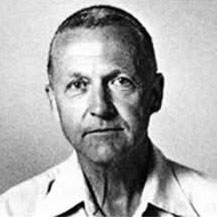Kevin A. Lynch
| Kevin Lynch | |
|---|---|
 |
|
| Born |
Kevin Andrew Lynch January 7, 1918 Chicago, Illinois, United States |
| Died | April 25, 1984 (aged 66) Aquinnah, Martha's Vineyard, Massachusetts, United States |
| Occupation | Urban planner, scholar, writer |
| Awards | Rexford G. Tugwell Award (1984) |
| Academic background | |
| Alma mater | Massachusetts Institute of Technology |
| Influences | Frank Lloyd Wright |
| Academic work | |
| Institutions | Massachusetts Institute of Technology (1949–1978) |
| Main interests | Urban planning; environmental psychology; urban form |
| Notable works |
The Image of the City What Time is This Place? A Theory of Good Urban Form |
| Notable ideas | Mental mapping; wayfinding; imageability |
Kevin Andrew Lynch (January 7, 1918 – April 25, 1984) was an American urban planner and author. He is known for his work on the perceptual form of urban environments and was an early proponent of mental mapping. His most influential books include The Image of the City (1960), a seminal work on the perceptual form of urban environments, and What Time is This Place? (1972), which theorizes how the physical environment captures and refigures temporal processes.
A student of architect Frank Lloyd Wright before training in city planning, Lynch spent his academic career at the Massachusetts Institute of Technology, teaching there from 1948 to 1978. He practiced site planning and urban design professionally with Carr/Lynch Associates, later known as Carr, Lynch, and Sandell.
Lynch was born as the youngest child of an Irish American family on January 7, 1918. He was raised in the Hazel Avenue neighborhood on the North Side of Chicago. After graduating from the Francis Parker School in 1935, Lynch matriculated at Yale University intending to study architecture. Finding its pedagogy too conservative, he left to study under Frank Lloyd Wright at Taliesin in Wisconsin. Lynch later stated that Wright was a great influence, but disagreed with his individualistic social philosophy. Leaving Wright after a year and a half, he enrolled Rensselaer Polytechnic Institute in New York to study engineering in 1939, but did not complete the program and went to work for Chicago architect Paul Schweikher. In 1941, Lynch married Anne Borders, a fellow graduate of the Parker School.
Three weeks after his wedding, Lynch was drafted into the Army Corps of Engineers, serving in the Philippines and Japan through 1944. After the war, he completed his undergraduate education at MIT and received a Bachelor's degree in City Planning in 1947.
...
Wikipedia
